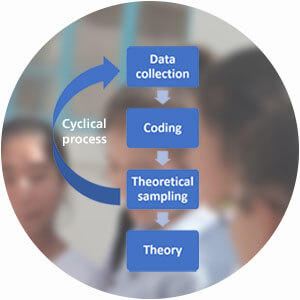
category building with Creative Coding, and.The main steps in using MAXQDA to analyze qualitative data based on the grounded theory methodology are what we call the ‘4 Cs’: Finally, the categories created through this process, as well as the links found between them, are used as the basis for the development of a new theory. In grounded theory-based analysis, the researcher generally analyzes the data as follows: finding repeating themes by thoroughly reviewing the data coding the emergent themes with keywords and phrases grouping the codes into concepts hierarchically and then categorizing the concepts through relationship identification. This article will, therefore, serve as a practical guide to analyzing data with MAXQDA rather than a methodological assessment of grounded theory itself. There are also many iterations of the grounded theory process, especially when it comes to coding. This may be because grounded theory methodology and its application “foster seeing your data in fresh ways and exploring your ideas about the data through early analytic writing” (Charmaz, 2006). Grounded theory remains one of the most popular qualitative methodological frameworks used by researchers today. Grounded theory is the discovery of theory from data systematically obtained from social research. The idea of starting with the data in order to create the theory contradicted previous methodological traditions, which mostly suggested that researchers should verify already-formulated theory during data collection. The principles of grounded theory were articulated in 1967 by sociologists Barney Glaser and Anselm Strauss in their book The Discovery of Grounded Theory. Grounded theory, therefore, begins with the collection of data based on a question rather than the aim to test a hypothesis. In other words, by collecting and analyzing qualitative data, the researcher can construct a new theory that is “grounded” in that data.


The central principle of grounded theory is that the researcher’s theories about a topic are constructed based on their data.

This article will walk you through tools that will help you get started with your MAXQDA-supported grounded theory analysis quickly and easily. MAXQDA supports various methodological frameworks, including grounded theory, by helping you collect, organize, analyze, visualize, and publish your data.


 0 kommentar(er)
0 kommentar(er)
